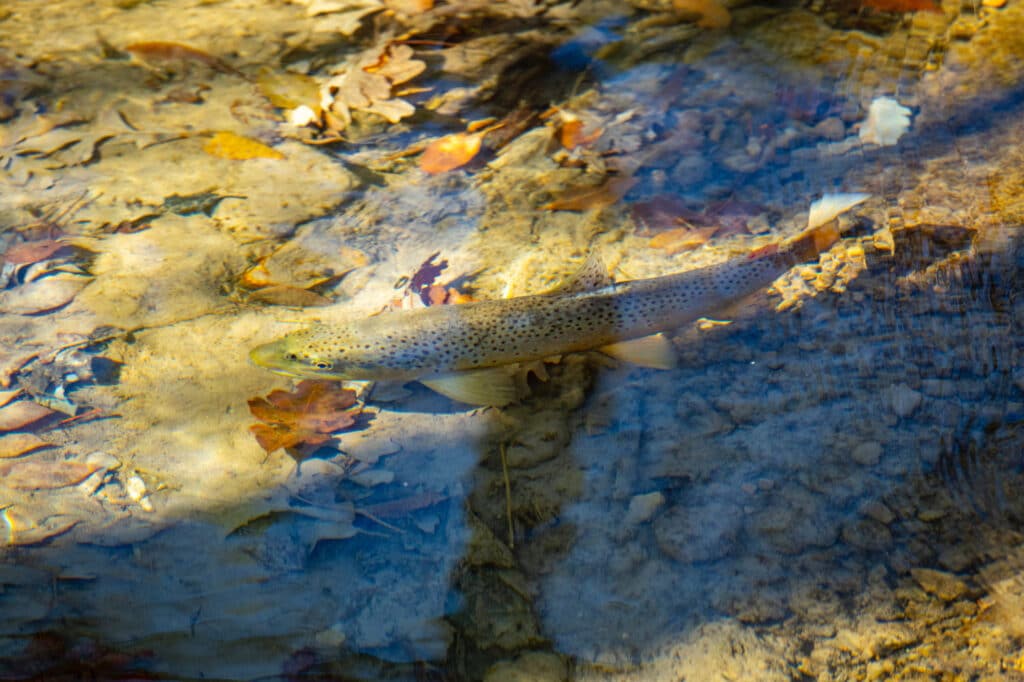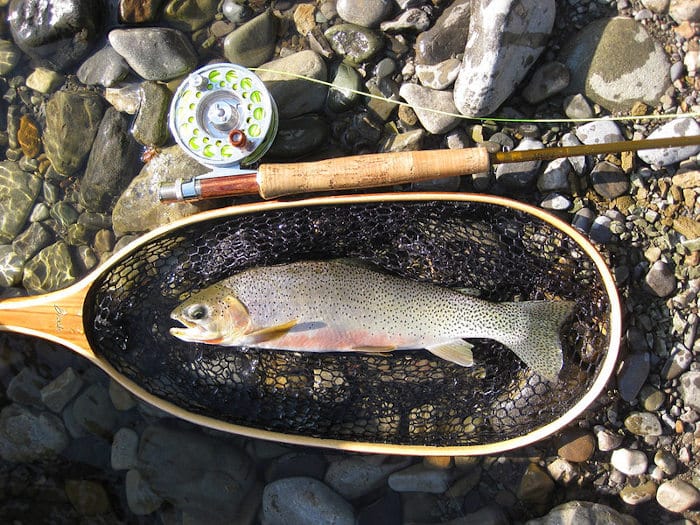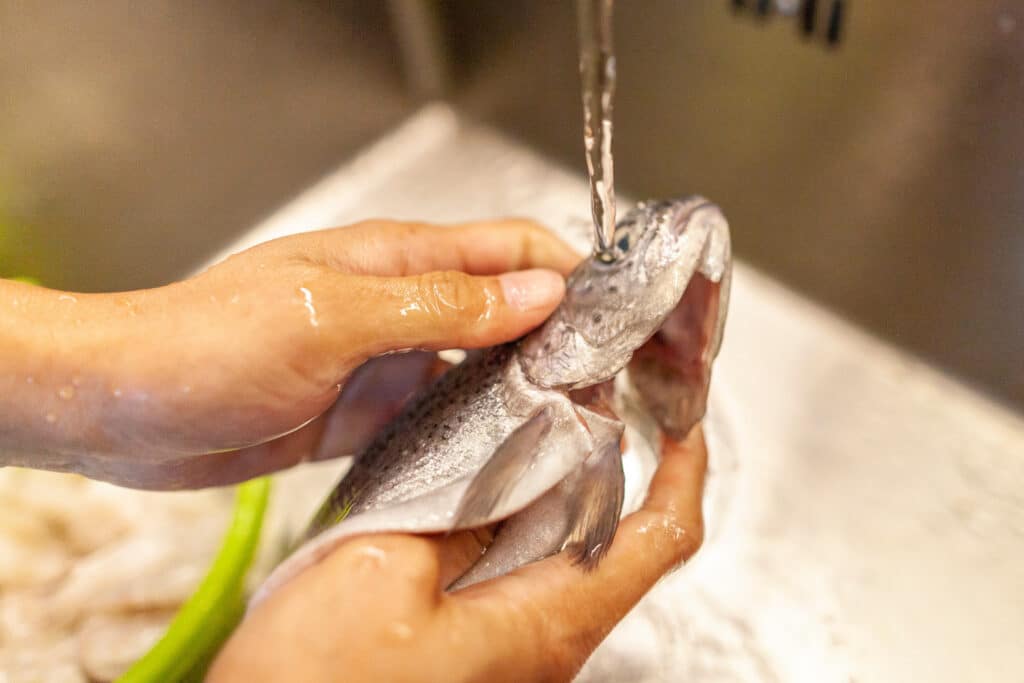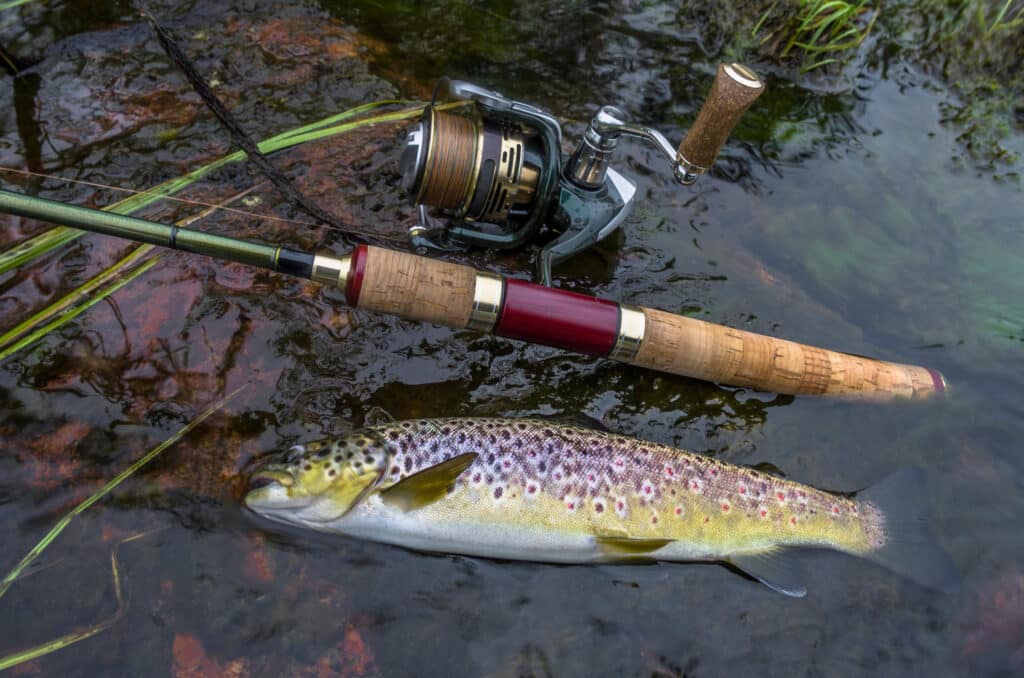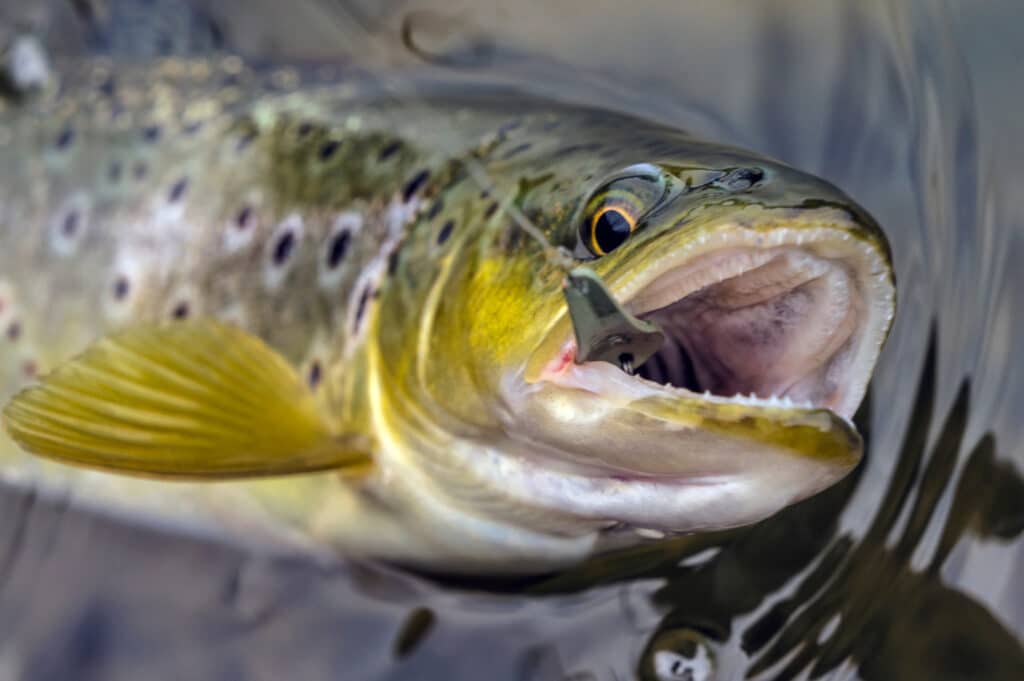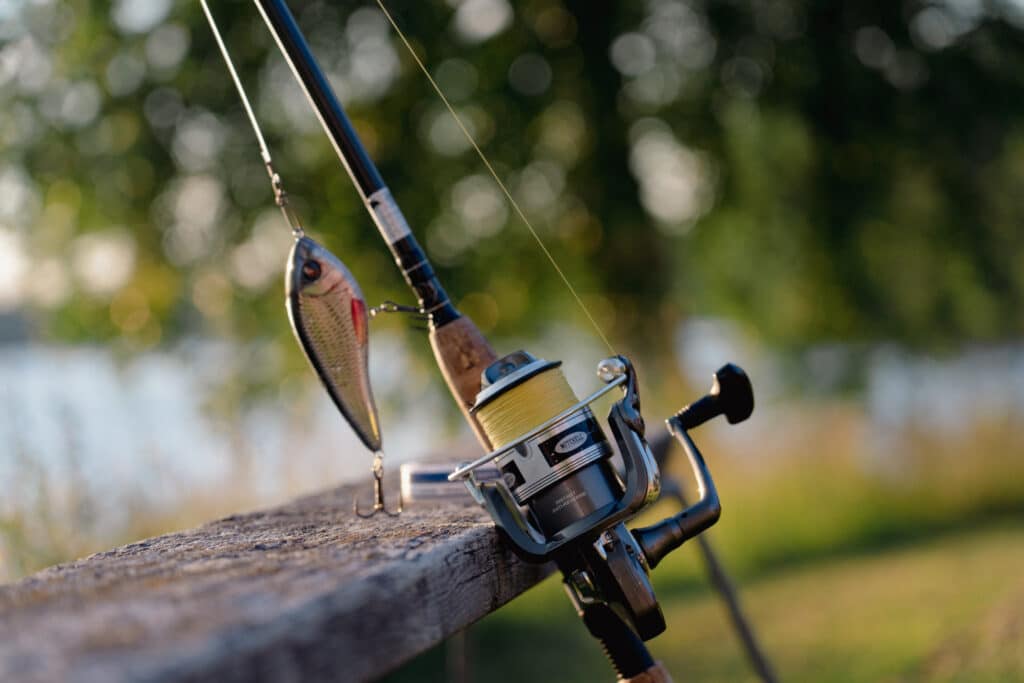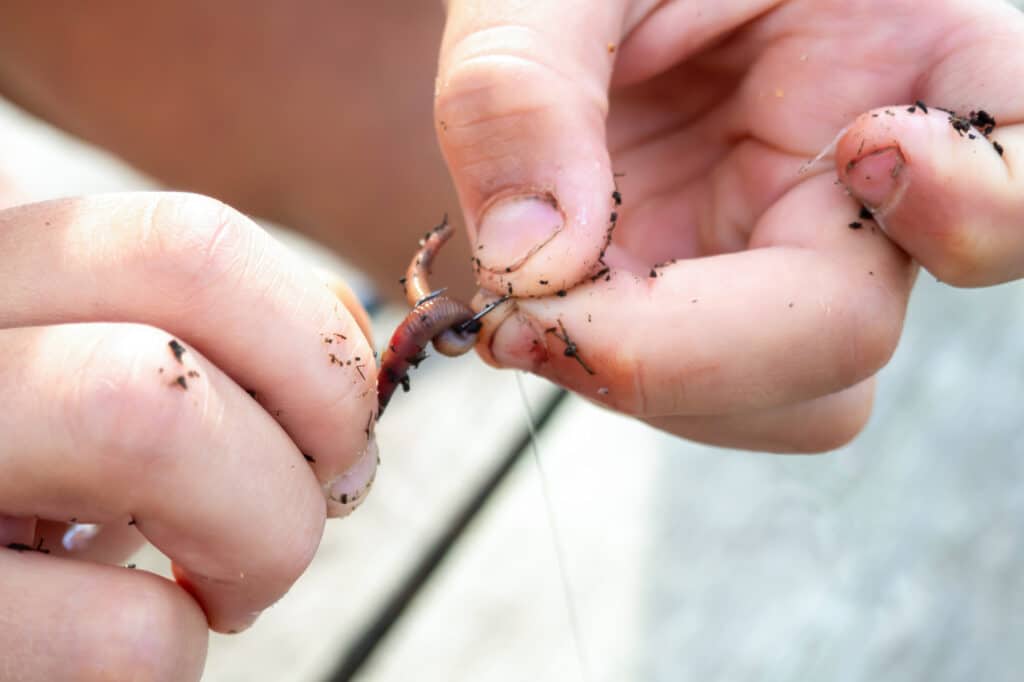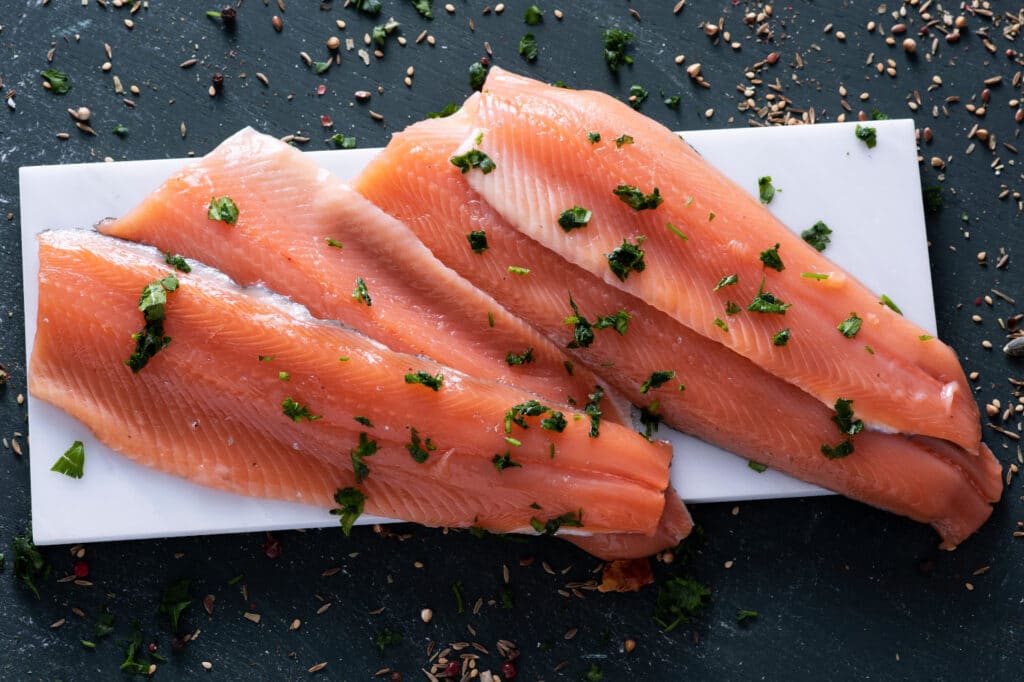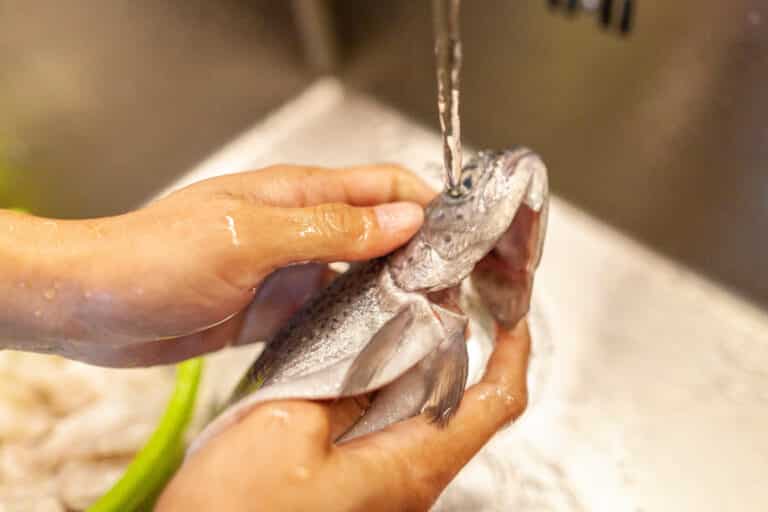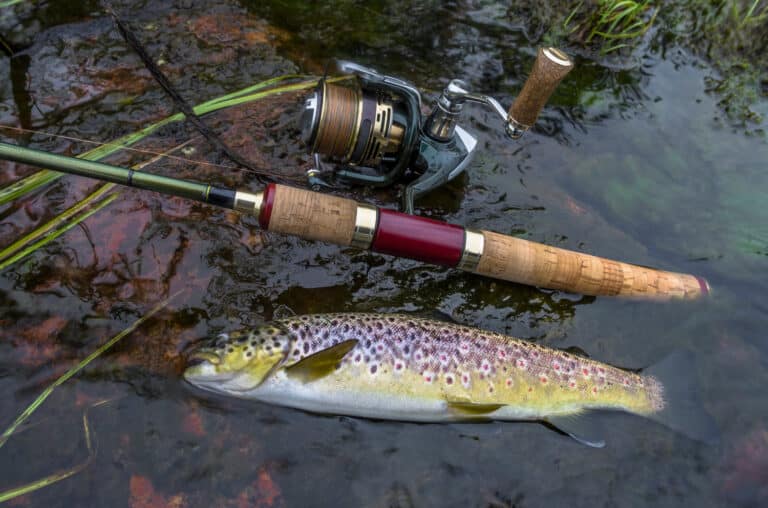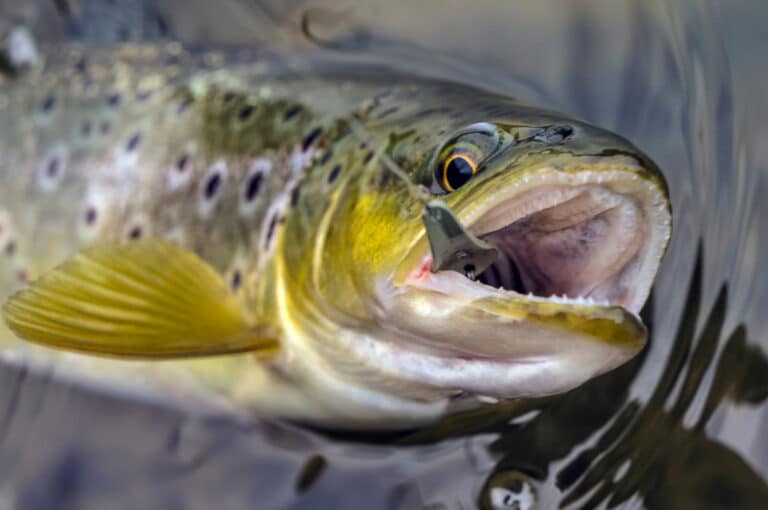In the wide world of fishing, there is nothing I love more than fishing for trout in small streams. Ultralight rods, aggressive, cold-water fish, and the potential to pull a giant out of a tiny creek keep me coming back over and over.
Bait fishing is fine, and if you’re just out for food and relaxation, it works great. But lures can be just as effective, and picking apart a boulder field with a spinner or spoon is fun and productive at the same time.
I usually prefer to hunt trout with lures, so over the years, I’ve settled on a few favorites. The best trout lures for streams are time-tested, fun to use, and work great for novices and veterans alike.
Read on for my favorites: time-tested and angler-approved.
The Wild Provides is a participant in the Amazon Affiliate program. If you click through one of the links on this site and make a purchase, we may receive a small commission at no extra cost to you. It helps to keep us up and running, but all recommendations are my own honest opinions.
#1. Mepp’s Aglia
Of all the trout lures that have ever been made, there are none quite as legendary as the Mepp’s Aglia.
Mepp’s Aglias are about as simple as they come; a spinner blade, a little bit of weight, and a treble hook. But the blades spin perfectly, flash like no other, and something about the thumping action is irresistible to trout.
Whenever I fish a stream or creek, my first cast is almost always a Mepp’s. I’ll switch up the size depending on the fish; #00 and #0 are perfect for tiny stream brook trout, but an ultralight rod is a must to be able to cast them. Bigger creeks that hold rainbows and cutthroats usually do better with a size #1 or #2.
The original gold blade with red accents is my go-to (get it here), but the chartreuse or rainbow trout patterns can also be killer.
#2. Rooster Tail Spinner
Rooster Tails are so popular that the name is used to refer to anything that looks even remotely like them. But nothing catches fish like the real thing, and if you use one, make sure to get the rooster tail brand (I’ve tried them all; the Amazon knockoffs just aren’t worth it).
Rooster Tails are deadly because they’re like a fly and spinner in one. The soft hackle pulses like a fly, but the small spinner blade provides enough flash to attract fish from a long way off. They’re a sort of best of both worlds, and it’s not just a gimmick; Rooster Tails are extremely effective.
Rooster tails are sized by weight. 1/32oz and 1/24 oz are the best for tiny streams and small trout, while 1/16z and 1/8 oz work great for streams that have the potential for bigger fish. They come in tons of colors and they all work, but pure white with silver blades, pink on pink, and brown trout are my all-time favorites.
#3. Kastmaster Spoon
Spinners are my favorite because they’re fun, they work, and you can feel them working with that tell-tale spinner blade thump. But they’re one-dimensional, and when the trout aren’t into the quick, aggressive action of spinners, spoons like the Kastmaster are the way to go.
Kastmasters are near-perfect at imitating a minnow (aka trout food). They have an irresistible fluttering motion, look just like a fish in the water, and can be effective at much slower speeds than a spinner.
You can give them a quick retrieve if you want to, but you can also jerk them like a jig, slow down a steady retrieve, or drop them straight down into an eddy and let them spin and flutter around.
Like any good trout lure, the best colors are gold or silver. But Kastmasters come in plenty of other colors, and the oranges, blues, and chartreuses can be especially effective in turbid water. Kastmasters, like Rooster Tails, are sized by weight, so think 1/32oz for little streams and up to ⅛ oz or even 1/4oz where bigger fish are possible. You can pick up this three-pack to save a couple of bucks and get the standby colors.
Kastmasters are also one of my favorite lures for targeting yellow perch. To learn all about perch and how to catch enough for fish tacos, check out my post on perch fishing.
#4. Little Cleo’s
Little Cleo’s have a legendary reputation among steelhead anglers. But steelhead are really just big, ocean-going rainbow trout, so it stands to reason that Little Cleo’s should be trout slayers too.
It turns out that they are, and their wobbly, fluttery motion is among the best around. I especially like the “hammered” series, which has the appearance of hammered metal and provides unlimited surfaces for light to flash off of.
Slowly drifting a Little Cleo down a stretch of fast-moving water, waiting for a trout to ambush is fun like nothing else is. And the style isn’t just fun; sometimes it’s the only way to get a wary old giant to commit. Letting the current do the work is key, but don’t leave much slack because these spoons often get hammered on the fall.
Classic gold or silver are the standby colors, but the half-and-half’s in blue, red, or green can give you just enough extra visibility in dirty water to get those trout to bite.
#5. Rapala Original
Rapala is synonymous with jerkbaits, and jerkbaits are synonymous with bass fishing. But while Rapala’s are absolutely killer bass lures, they’re just as effective on trout in streams, rivers, or even lakes.
They’re the only lure on this list that has a diving bill, and they’re also the only one designed to wobble side-to-side. Sure, a spinner works great, but giving the trout something different can often be the key to initiating a strike. Letting Rapala’s stop and hover, then twitching them to dive them back down imitates a wounded baitfish, and can be absolutely deadly.
My go-to colors are either the yellow perch or brook trout patterns. I don’t think the trout care much about how accurately they imitate the species they’re modeled after, but the color combos just seem to work.
#6. Trout Magnets
Why trout magnets work so well is a little bit of a mystery. These 1 ¼ inch micro mealworms don’t have a ton of action, and it’s hard to believe the tiny jigheads that they come with will do much to help out. But it turns out that they do, and the slanted, dart-style jigs make these grubs flick around in the water in a way that trout love.
In streams, letting the current do the work is key. The unique shape of the light jig gets pushed around as it falls, and on the fall is when the fish usually strike. Just pick it up, let it drift downstream, and repeat, and you’re sure to catch fish.
Trout Magnets come in a kit with multiple colors of both grubs and jigs. All you have to do is pick a combo, rig it up, and send it downstream.
#7. Marabou Jigs
Jigs aren’t usually thought of as trout gear, but marabous are a different story. The entire body is made of Marabou feathers, and these feathers pulse, undulate, and “breathe” with even the slightest movement or current.
The realism of a marabou is unmatched, but to harness its unique action it needs to be fished slowly. Tiny movements, slow lifts and falls, or very slow steady retrieves are the best methods of enticing fish. You can also slay fish with jigs under a bobber, because the current will do all the work on the sensitive soft hackle.
Marabou Jigs aren’t actually a branded lure so much as they are a category. There are plenty of brands that make good ones, but if you’re looking for a quality company with lots of color and size options, try AeroJig Wooly Buggers. They come in everything from natural browns and blacks to bright pinks and purples. Go with the smallest size you can that won’t be completely swept away by the current to make sure that the jig has maximum action in the water.
#8. Panther Martin Spinner
Panther Martins have a cult following in the spinner world. They’re unique in that the blade isn’t attached to the body with a clasp or clevis; the spinner body is fed straight through a hole in the blade. This design makes them versatile, and unlike Rooster Tails, that blade will still wiggle and flash even on a slow retrieve.
On a fast retrieve, that blade thumps and pumps like no other. That thumping is what I think ultimately makes Panther Martin’s a trout killer, sending out vibrations that draw fish in and make them commit.
You can find these just about anywhere and in a million different colors. But I like the classic yellow body with the silver blade in size 1 or 2, and Panther Martin makes a “best of the best” 6-pack with three colors in two sizes, specifically for trout.
#9. CP Swing Spinner
If you’ve read this far, you know that I think straight-up bronze or silver are usually the best trout-catching colors.
CP Swing seems to agree, and their spinners come in bronze, silver, or copper only. But despite the lack of color options, these things catch fish. The bodies are made of stacked metal beads, so they’ll reflect light at any angle. And when the textured blades spin around them, it’s easy to see why it’s such an attractive lure.
The heavy body of a CP Swing makes them a great option for long casts or deep holes. I particularly like to drop them into the deepest hole in the river, letting the blade flutter on the way down, and then crank them downstream to bring them right in front of the trout’s face
Bonus: Flies and Adjust-A-Bubbles
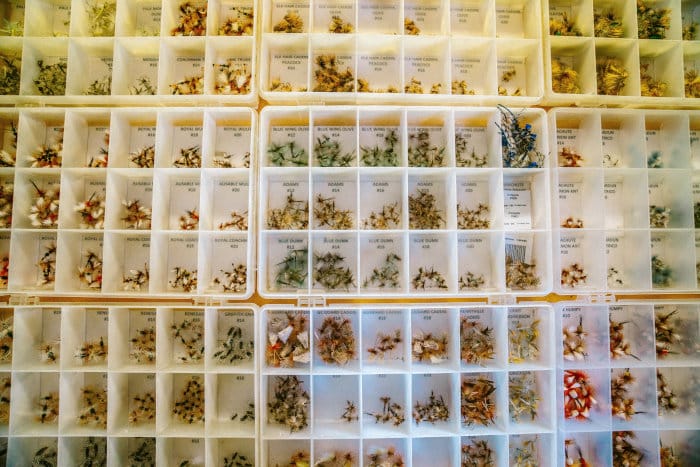
I hesitate to even add this one because I know that fly fishing purists will scoff at using a fly with spinning gear. And although fly fishing is fun and effective too, there are times when you just want to fish with spinning gear. For those times when the fish don’t want any of your conventional lures, an Adjust-A-Bubble and a few flies can be a fish-catching lifesaver.
Adjust-A-Bubbles are essentially slip-floats that are designed to be filled with water. The weight of the water gives you what you need to cast a fly, but it’s neutrally bouyant in the water, allowing for a relatively natural drift and float. It might sound gimmicky, but I’ve seen this technique absolutely slay fish in alpine lakes and streams when nothing else is working.
Tips For Trout Fishing In Small Streams
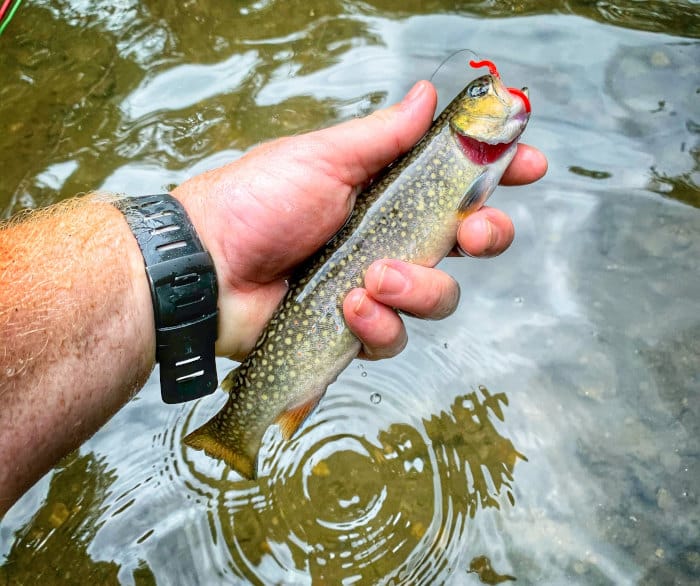
Small stream trout fishing is a totally different ballgame than lake or even big river fishing. It’s less a matter of covering water, and more a matter of picking apart what’s in front of you. The more you know about trout behavior, feeding habits, and preferred locations, the more fish you’ll catch.
Tip #1: Target Good Cover First
Just like in lakes, trout in streams need adequate cover. But in skinny, shallow creek water, cover comes at a premium, and might be a little different than what you’re used to seeing.
Cover in these locations can be as simple as some brush or a tree that hangs over the water. But if you can find small dropoffs, pools, and especially deeper eddies, these trout hotspots are the first places you should cast into.
Tip #2: Be Stealthy
Trout are spooky fish, and getting too close can cause them to leave your whole stretch of water. Bears, raccoons, and many birds prey on trout, so getting too close to them on the shore is sure to scare them off.
Whenever I fish a creek, I analyze the water I’d like to target from a distance. Then I’ll approach and get only as close as I need to to make the cast, often using nearby brush or trees to conceal my outline a little. No matter how stealthy you are, you’ll spook some fish. But keeping quiet, moving slowly, and keeping your distance will always give you an edge.
Tip #3: Pocket Water Is King
In small creeks, boulders and downed trees tend to be everywhere. And with big obstructions comes pocket water, the ideal place for the biggest fish in the area.
Pocket water is the slack water behind a big boulder or other obstruction, allowing trout to lazily sit and wait for food to flow around the edges. When you fish it, imitate the food. Start by casting your lure upstream of the boulder and retrieving or drifting it right next to the pocket. If that fails, drop a spoon straight into the pocket and often, the trout will instinctively bite it.
Final Thoughts
There are literally thousands of trout lures available, and virtually all of them will catch some fish. But there’s a reason the lures on this list are so popular, and they’ve all stood up to the test of time. Every single one of these lures is a bona fide trout catcher, and tying up any one of them is sure to catch you a fish in your local stream.

